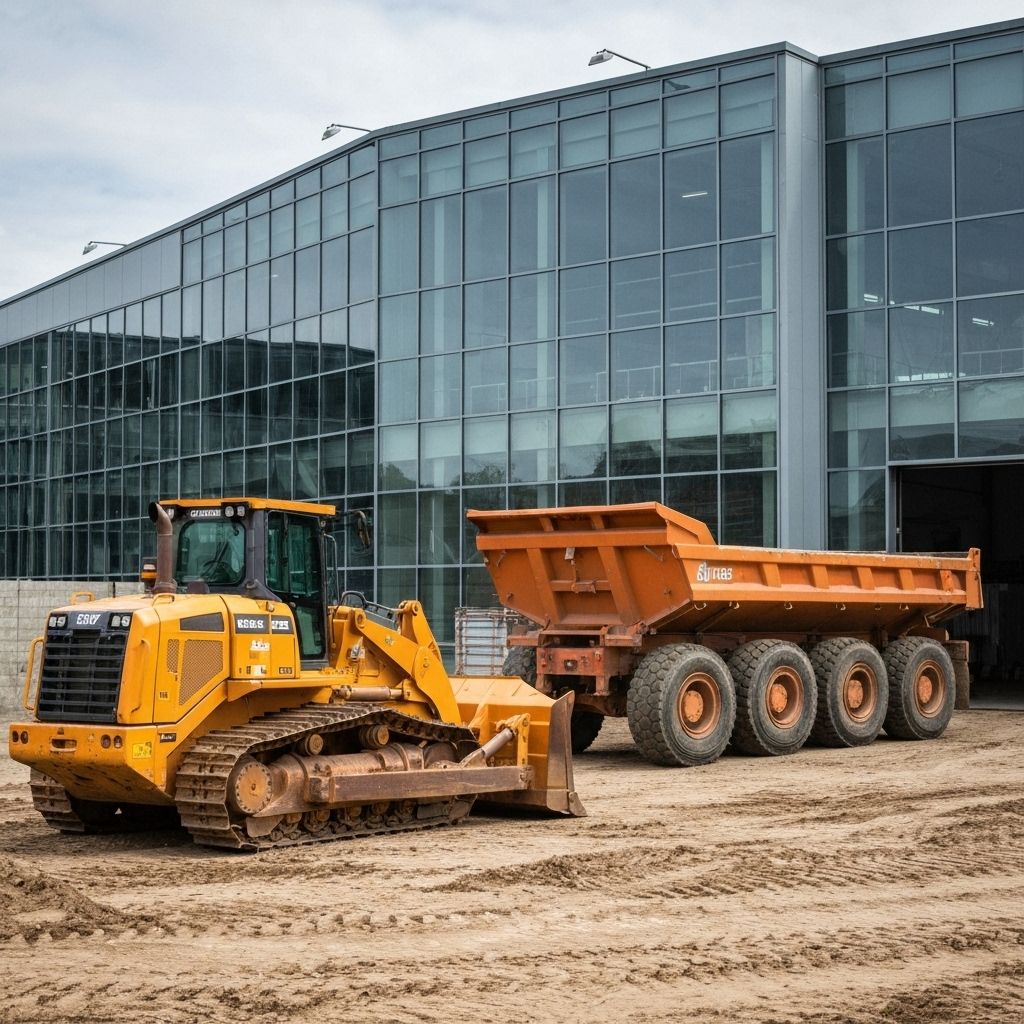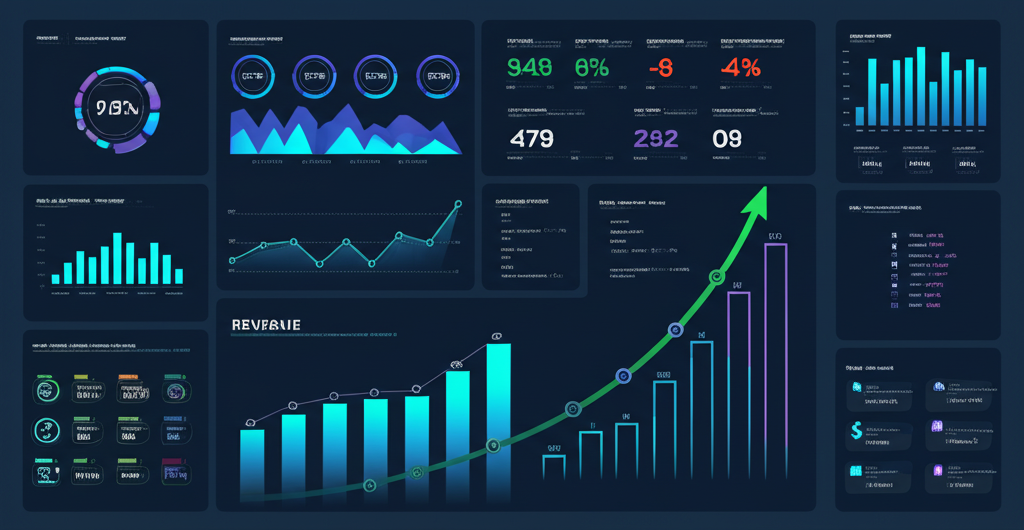The Future of Construction Equipment: Trends to Watch

The construction industry is experiencing a technological revolution. From autonomous equipment to sustainable power sources, the future of construction equipment promises increased efficiency, safety, and environmental responsibility. Understanding these trends helps businesses make informed equipment investment decisions.
1. Electrification and Alternative Fuels
The shift toward electric and alternative fuel equipment is accelerating, driven by environmental regulations, operating cost savings, and corporate sustainability goals.
Electric Equipment Advantages:
- Lower operating costs: Electricity is cheaper than diesel, and electric equipment requires less maintenance
- Zero emissions: Ideal for indoor work and urban projects with strict environmental requirements
- Quieter operation: Reduces noise pollution and enables work in noise-sensitive areas
- Improved operator comfort: Less vibration and heat compared to diesel equipment
Emerging Technologies:
- Battery-electric excavators and loaders
- Hydrogen fuel cell equipment
- Hybrid diesel-electric systems
- Solar-powered auxiliary systems
2. Autonomous and Semi-Autonomous Equipment
Automation is transforming construction sites, with equipment that can operate with minimal or no human intervention. This technology addresses labor shortages while improving safety and productivity.
Current Applications:
- Autonomous dozers: Programmed to grade and level terrain with precision
- Self-driving haul trucks: Transport materials without operators
- Robotic excavators: Perform repetitive digging tasks
- Automated compaction equipment: Ensure consistent soil density
Benefits:
- 24/7 operation capability
- Reduced labor costs and safety risks
- Consistent quality and precision
- Data collection for project optimization
3. Advanced Telematics and IoT Integration
Modern equipment is increasingly connected, providing real-time data on location, performance, maintenance needs, and operator behavior.
Telematics Capabilities:
- Fleet management: Track equipment location, utilization, and idle time
- Predictive maintenance: Identify potential failures before they occur
- Performance monitoring: Analyze fuel consumption, productivity, and efficiency
- Operator training: Monitor and improve operator skills and safety
Business Impact:
- Reduced downtime through proactive maintenance
- Optimized equipment utilization
- Lower fuel and operating costs
- Improved project planning and scheduling
4. Augmented Reality and Virtual Reality
AR and VR technologies are revolutionizing equipment operation, training, and maintenance.
Applications:
- Operator training: Safe, cost-effective simulation of equipment operation
- Maintenance guidance: AR overlays provide step-by-step repair instructions
- Site visualization: Preview projects before breaking ground
- Remote assistance: Experts can guide on-site technicians through complex repairs
5. Artificial Intelligence and Machine Learning
AI is making equipment smarter, enabling better decision-making and autonomous operation.
AI Applications:
- Predictive analytics: Forecast equipment failures and optimize maintenance schedules
- Automated grading: AI-controlled blades adjust in real-time for perfect grades
- Load optimization: Calculate optimal loads for maximum efficiency
- Safety systems: Detect and avoid obstacles, preventing accidents
6. Modular and Multi-Functional Equipment
Equipment versatility is increasing through modular designs and quick-attach systems.
Advantages:
- One machine performs multiple tasks
- Reduced equipment fleet size
- Lower transportation and storage costs
- Faster attachment changes increase productivity
Examples:
- Excavators with interchangeable attachments (buckets, breakers, grapples)
- Skid steers with dozens of attachment options
- Compact equipment with multiple power sources
7. Enhanced Safety Features
Safety technology is advancing rapidly, protecting operators and site workers.
Safety Innovations:
- 360-degree cameras: Eliminate blind spots around equipment
- Proximity sensors: Alert operators to nearby workers or obstacles
- Automatic shutdown systems: Stop equipment when unsafe conditions are detected
- Operator monitoring: Detect fatigue or distraction
- Rollover protection: Advanced ROPS and FOPS systems
8. Sustainable Manufacturing and Materials
Equipment manufacturers are adopting sustainable practices and materials.
Sustainability Trends:
- Recycled and recyclable materials in construction
- Reduced manufacturing emissions
- Longer equipment lifespans through better design
- Remanufacturing programs for components
9. 3D Printing and Additive Manufacturing
3D printing is changing how equipment parts are produced and maintained.
Applications:
- On-demand production of replacement parts
- Custom attachments and modifications
- Reduced inventory and shipping costs
- Faster repairs with locally printed parts
10. Subscription and Equipment-as-a-Service Models
Ownership models are evolving, with more flexible options for accessing equipment.
New Models:
- Equipment subscriptions: Pay monthly for access to equipment without ownership
- Usage-based pricing: Pay only for hours used
- Bundled services: Equipment, maintenance, and telematics in one package
- Flexible terms: Scale equipment fleet up or down based on project needs
Preparing for the Future
To stay competitive, construction businesses should:
- Stay informed: Follow industry publications and attend trade shows
- Invest strategically: Balance current needs with future capabilities
- Train your team: Ensure operators and technicians can work with new technology
- Partner with innovative suppliers: Work with equipment dealers who embrace new technology
- Consider financing: Use equipment financing to access the latest technology without large capital outlays
Conclusion
The future of construction equipment is exciting and transformative. While not every trend will be relevant to every business, understanding these developments helps you make informed decisions about equipment investments. By staying ahead of technological curves and strategically adopting innovations that benefit your specific operations, you can maintain a competitive edge and position your business for long-term success.
Related Articles

10 Ways Equipment Financing Can Accelerate Your Business Growth
Discover how strategic equipment financing can help you scale faster, preserve capital, and stay competitive in today's market.
Read More
Equipment Leasing vs. Buying: Which Is Right for Your Business?
Explore the pros and cons of leasing versus purchasing equipment to make an informed decision for your company's financial future.
Read More
5 Signs Your Business Is Ready for Equipment Financing
Learn the key indicators that suggest it's the right time to invest in new equipment through financing options.
Read MoreReady to Finance Your Equipment?
Get started with a free consultation and discover the best financing options for your business.